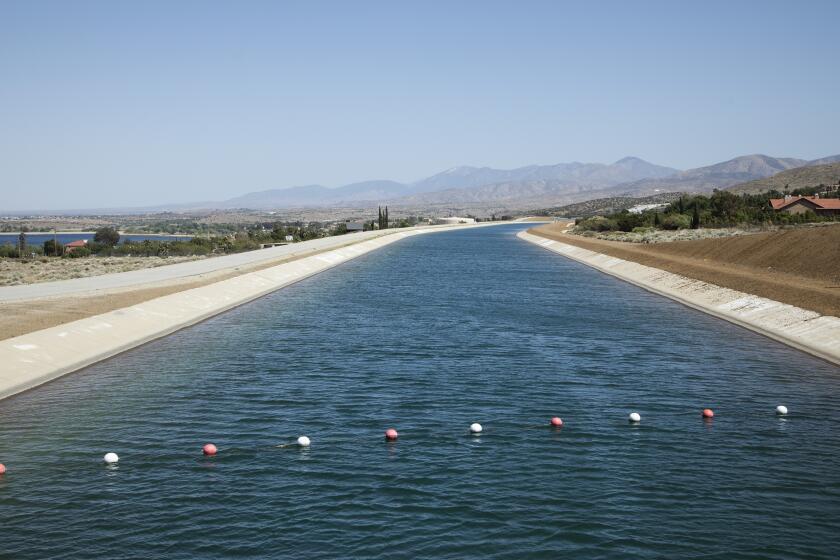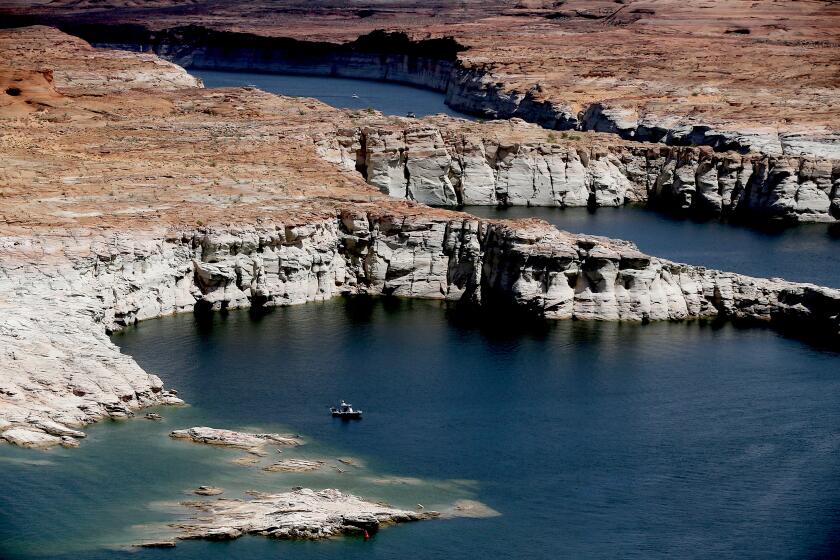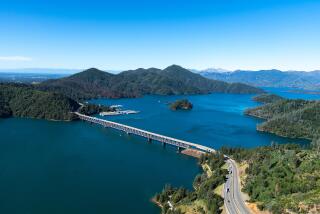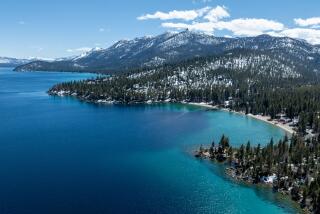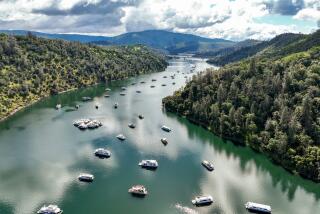It’s not even summer, and California’s two largest reservoirs are at ‘critically low’ levels
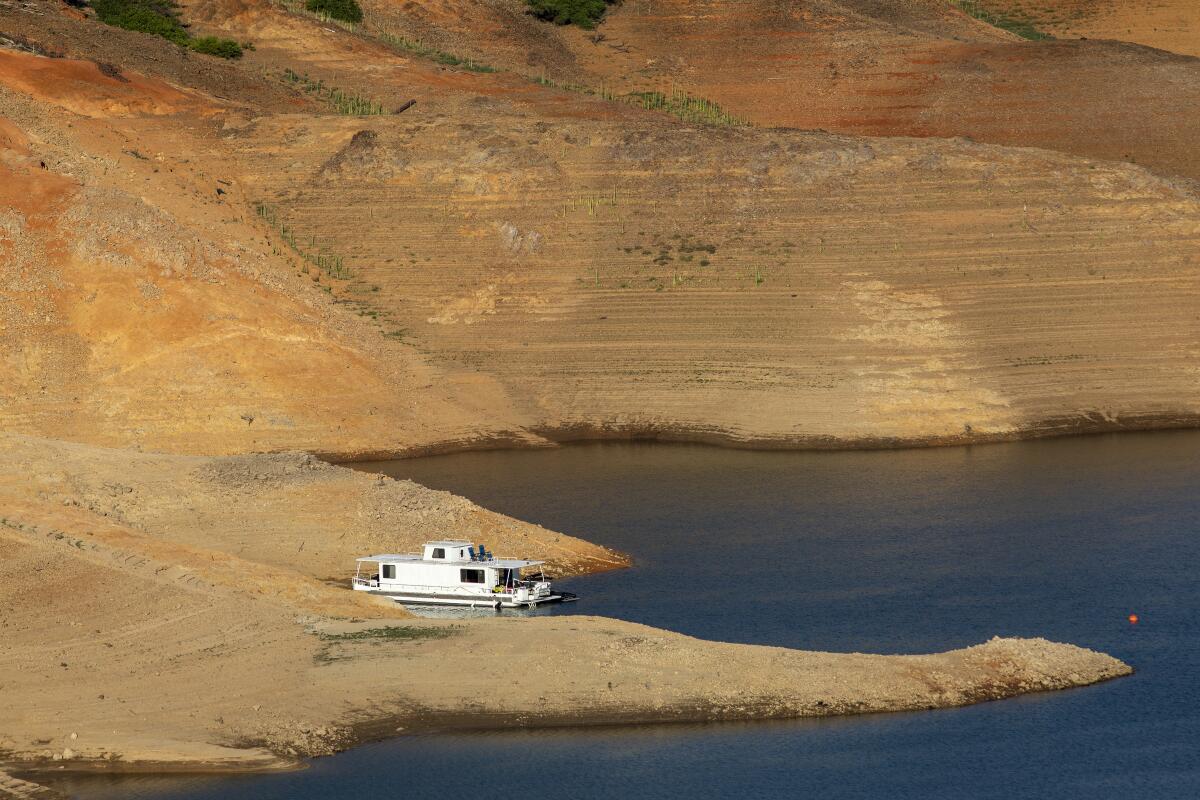
At a point in the year when California’s water storage should be at its highest, the state’s two largest reservoirs have already dropped to critically low levels — a sobering outlook for the hotter and drier months ahead.
Shasta Lake, which rises more than 1,000 feet above sea level when filled to the brim, is at less than half of where it usually should be in early May — the driest it has been at this time of year since record-keeping first began in 1976. Lake Oroville, the largest reservoir in the State Water Project, a roughly 700-mile lifeline that pumps and ferries water all the way to Southern California, is currently at 55% of total capacity.
In the U.S. Drought Monitor’s latest report, officials described both reservoir conditions as “critically low” going into the summer. Other water officials in recent days have called this “the worst drought in the history of the State Water Project.”
Water suppliers in parts of Southern California were ordered to impose severe water restrictions. Details of the new rules are starting to take shape.
This latest reservoir assessment is yet another wake-up call that California — along with much of the West — is in for a parched and challenging summer. Millions of residents across Southern California are facing the harshest-ever water restrictions beginning June 1.
Along the Colorado River, projections show that the nation’s two largest reservoirs, Lake Mead and Lake Powell, are reaching a shortage so severe that larger water cuts are likely in 2023 for Arizona, Nevada and Mexico — and at some point, California.
Just last week, boaters in Lake Mead stumbled across a barrel containing human remains — evidence of a killing that had been hidden for decades by higher water levels. Police said more human remains were discovered at the lake on Saturday.
There is no connection to the first case, investigators said, and no foul play is suspected.
Authorities expect to uncover more remains as more of the lake bottom becomes exposed.
Citing extreme drought, the government has announced reduced water releases from Lake Powell and Glen Canyon Dam by nearly half a million acre-feet.
So far this year, California has experienced the driest January, February and March ever recorded. The snowpack — a critical “bank” of water for the state going into the summer — has already melted much faster than expected because of warmer-than-average temperatures. (Snowmelt typically makes up almost a third of California’s water supply and feeds major reservoirs like Shasta during the driest months of the year.)
Records continued to shatter on the first day of April, when the annual measurement of water stored in the snowpack turned out to be one of the ten most dire in recorded history.
Looking now at the numbers for May, California State Climatologist Mike Anderson said that there will be limited opportunities to increase reservoir levels.
“Statewide reservoir storage has increased at a slower pace than normal so far this year due to the limited storms and associated runoff,” he noted in a hydrology update issued Friday with the forecasting team at the California Department of Water Resources. “Streamflow and groundwater are also both well below average across much of the state. ... As May continues, the flows will drop off rapidly.”
Additional heat waves, he added, “will determine how quickly the landscape dries out.”
More to Read
Sign up for Essential California
The most important California stories and recommendations in your inbox every morning.
You may occasionally receive promotional content from the Los Angeles Times.
